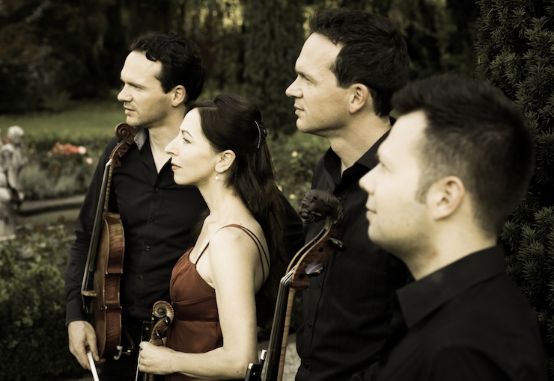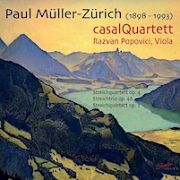Expressive counterpoint
The Casal Quartet and Razvan Popovici bring Paul Müller-Zürich's gripping chamber music out of oblivion.

As a teacher of theory and composition, he influenced several generations of musicians in Switzerland; as an author of choral works, he created something lasting; his equally independent chamber music has yet to be rediscovered: Paul Müller-Zürich (1898-1993) was a gifted teacher and, as a composer, a master of counterpoint. His early works for string instruments bear witness to this.
Trained in Zurich, Paris and Berlin by Philipp Jarnach and Volkmar Andreae, among others, and familiar with the music of his contemporaries, he distanced himself from the avant-garde, preferring to orientate himself towards Brahms and Reger rather than Schoenberg or Webern. Paul Müller-Zürich went far as an advisor and organizer, joining the Pro Helvetia Foundation Board in 1957 before being appointed President of the Swiss Association of Musicians in 1960.
The expressive beginnings of the composer, who was awarded the Music Prize of the City of Zurich in 1953, are impressively demonstrated by the Casal Quartet with Razvan Popovici (viola) in three differently scored works. The String Quintet op. 2 in F major (1919) jumps out at the listener from the very first bar, when a fortissimo chord is followed by an initial ostinato motif pianissimo and the main theme, which soars upwards full of tension, is heard. Disturbingly buzzing presto interjections cloud the gentle flow of the slightly melancholy music in the third movement, an intermezzo that begins sweetly. Ostinati also characterize the finale, which is condensed by fugato interjections and ends abruptly in D minor.
The String Quartet in E flat major op. 4 (1921) is also dominated by highly expressive pushing and storming, with the chromaticism in the Adagio forming the greatest contrast to the less complicated harmony in the folk-dance-like rondo finale.
The String Trio op. 46, composed around 1950, is calm from the outset, with its lyrical first movement leading from C minor to C major. The members of the Casal Quartet charge into the powerfully gripping finale with great intensity of sound and musical esprit.
Paul Müller-Zürich: String Quartet op. 4, String Trio op. 46, String Quintet op. 2. CasalQuartet (Felix Froschhammer, Rachel Späth, Markus Fleck, Andreas Fleck), Razvan Popovici, viola. Solo Musica SM 287








